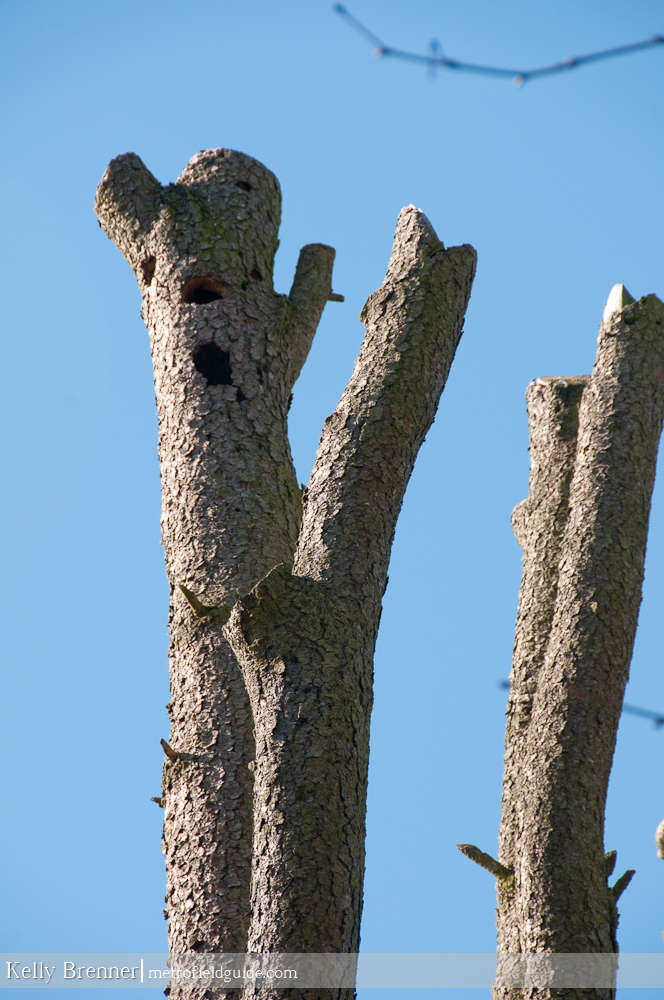
Managed Snag
While perhaps not the most exciting topic of wildlife design, dead wood is a very important one. From snag to downed logs, a huge variety of wildlife make many uses of wood. Over 85 species of birds in North America find ways to use snags including Wrens, Northern Flicker, Nuthatches, Screech Owl and even the Turkey Vulture. On the ground, downed logs are of use to a variety of smaller mammals such as moles, chipmunks and even river otter. Many amphibians and reptiles also depend on downed logs including salamanders, skinks, snakes, turtles and frogs. The wide variety of uses from all of the different wildlife species include activities such as nesting, roosting, foraging, perching and mating and territorial displays. Primary excavators such as woodpeckers and sapsuckers create new cavities out of hardwood, but many won’t use the same cavity for more than a couple of years; then the secondary cavity users move in such as the Tree Swallow, Wood Duck, House Wren or mammals such as bats, squirrels and porcupines.
Wildlife Benefits
In a natural forest setting the space between the loose bark and wood of a downed log can be used by invertebrates and smaller vertebrates for shelter. Elevated parts of the log are used for foraging as well as lookout sites. The base of the log provides foraging for woodpeckers and other insectivorous birds. Under the log is a protected area that is used by ground nesting birds as well as amphibians. Branches and the roots are used by birds for nesting or perching. Snags are used similarly, cavities are used for nesting, dead branches for perching and preening, loose bark is often used by bats to roost under, and many species forage for insects in the snag. If they fall across a stream they can be used as a bridge for mammals and in a river or pond, they can be used as a basking site for turtles or frogs. In the Pacific Northwest nearly 75 species of wildlife nest in snags while almost 45 species are known to forage in snags. One report in England found 456 species, including invertebrates, living in the wood of decaying trees.
Ecological Benefits
In addition to wildlife values, decaying wood has many other ecological functions such as mineral cycling, nitrogen fixation and then becoming a nurse log. Nurse logs are trees that have fallen to the ground and because of the nitrogen concentration and water retention, the downed log makes a good location for seedlings and many take root in the downed tree. The new seedlings also help increase habitat diversity. Often times in the forest, evidence of these nurse logs remains long after they have decayed away in a linear row of standing trees. Once the tree is on the ground, it affects the surrounding plant community which starts to change and a microhabitat is created around the log.
Decay
There are different levels of a snag, hard and soft. Hard snags are trees that have recently died, the heartwood, or the wood in the middle, is still somewhat hard and the bark is still tight. Once a dead tree has time to rot, the heartwood becomes soft, the bark starts to loosen and branches start to fall off and it is then classified as a soft snag. This happens because fungus begins to infiltrate and weather also weakens the wood. Different species of trees decay at varying rates and many conifers tend to rot at a slower rate than deciduous trees do. Whether a tree is small or very large, it is still valuable to wildlife.
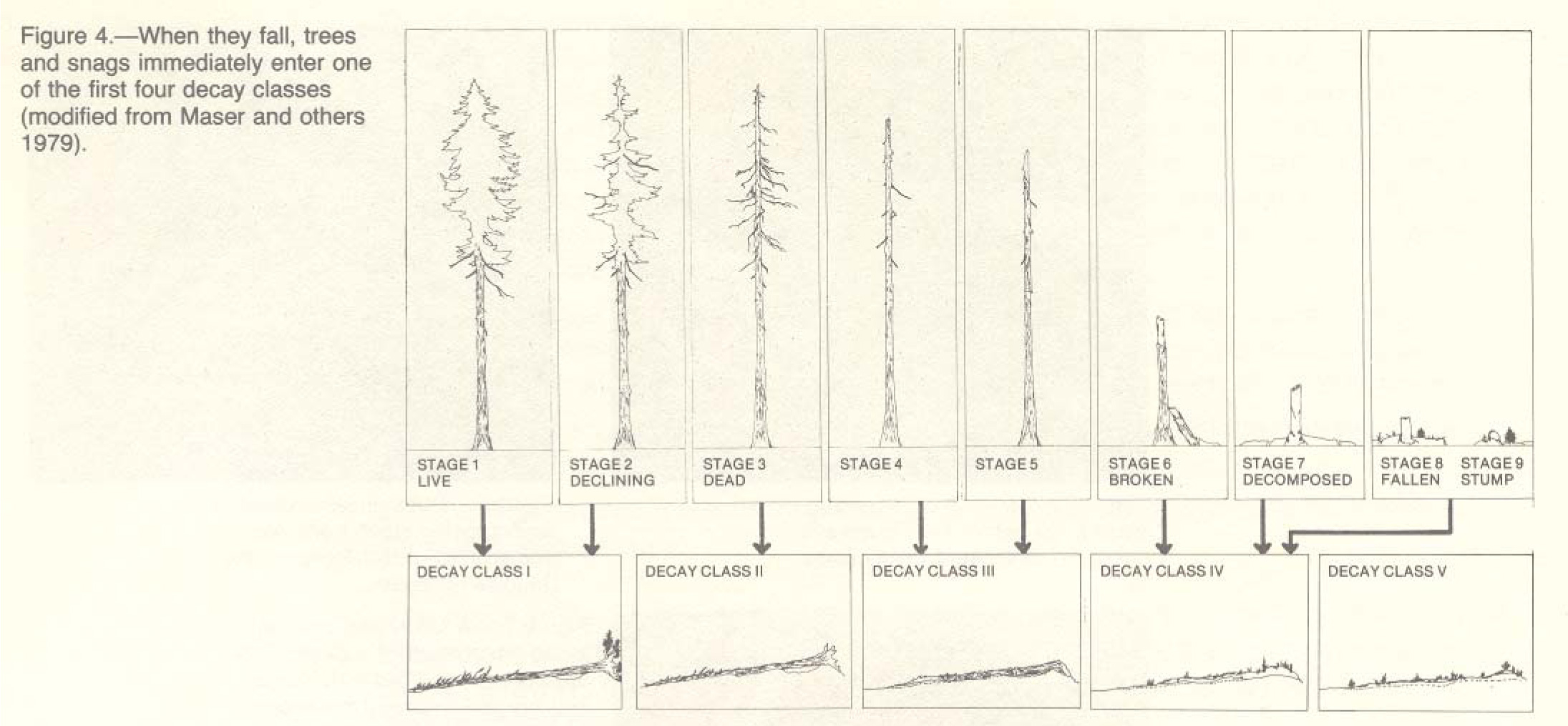
Levels of Decay from The Seen and Unseen World of the Fallen Tree

Levels of Decay from The Seen and Unseen World of the Fallen Tree
Wood Piles
Another way to use decaying wood is by creating a wood pile. Wood, or brush piles create excellent cover for a variety of wildlife species including small mammals, birds, reptiles and amphibians. A wood pile is made by starting with a base of larger branches which creates entries for wildlife and then piling on other various sizes of branches in a mound or tepee-shape. Birds such as hummingbirds, robins, towhees and warblers will perch on the outside of a wood pile while chickadees, thrushes and wrens will find shelter inside the brush pile. Mammals, reptiles and amphibians that make use of the base of the wood pile include chipmunks, rabbits, shrews, turtles, toads and salamanders. The wood piles serve many functions including providing shelter from predators and the weather, perching, foraging and even hibernation.
Landscape Use
In the forest trees die for many reasons such as insects, disease, lightning, fire or other injury. In the urban setting, trees are very carefully managed and once a tree dies, it’s immediately removed. Snags are very hazardous to leave in areas of high use because as they start to decay, branches start to fall off, the top can break of easily in wind and eventually the entire snag will fall down. However, trees can be professionally managed to remove the most dangerous limbs and top and if carefully monitored a snag can last many years in a park or yard. Once a dead tree has to come down it can be used in the same location as a downed log. If there are no dead or dying trees in a location there are ways to bring them in. Healthy, but unwanted trees can be killed or just a part of the tree, such as a large limb. There are many techniques for doing this, all of which should be done professionally. Wood can also be salvaged from a construction site, moved in, and placed as a downed log or ‘planted’ as a snag. Cavities can be created in snags or live trees and fitted with an appropriately sized hole cover to prevent birds such as Starlings from taking over the cavities.
The problem with this habitat element is that a snag, downed log or wood piles will only fit certain landscapes. They certainly won’t be aesthetically acceptable in more formal landscapes and they may not fit with other designs of parks, campuses or some residential landscapes. However, like the recent creativity in bat houses, which are functional, artistic and aesthetic, there are likely ways to use decaying wood in an artistic way.
Indeed, there has already been a move in using dead wood in making constructed towers, structures and walls for invertebrates in the U.K. which was covered in these posts: Beyond the Hive Results and Insect hotels, mansions and other dwellings.
So far there has not been an artistic approach to dead wood. However, what if wood piles were looked at by a sculptural artist and turned into a beautiful wood sculpture. What if a wood carving artist looked at a snag and carved designs in the trunk or out of some limbs? I look forward to the day when artists, designers and ecologists come together on the subject of dead wood.
Artistic Examples
There are a number of artists who have used wood as a design medium that have come up with interesting sculptures or works that could potentially be used as an idea, or base for the creation of artistic dead wood for wildlife. Artistic decaying wood may not have all of the benefits of naturally decaying wood in a forest, but the benefit of adding this habitat element to a landscape that would not otherwise consider wood may be worth a look.
Alastair Heseltine is a sculptural artist that has created a number of wood based sculptures that could potentially be adapted for wildlife use.
Artist Jea-Hyo Lee also makes beautiful wood sculptures that could potentially be modified for wildlife use.
Another unique example comes from the interior landscape firm The Plantworks who created this piece for a restaurant. This sculpture could also be used as an example for creating wood shelter for wildlife.
Further Reading::
There are a great number of resources about snags, downed logs and brush piles. See the Habitat Elements page for a list of resources. Landscaping for Wildlife in the Pacific Northwest also has two, excellent and detailed chapters on these topics.
For a very detailed look at snags and the decaying process of trees, see The Seen and Unseen World of the Fallen Tree, downloadable in four sections.

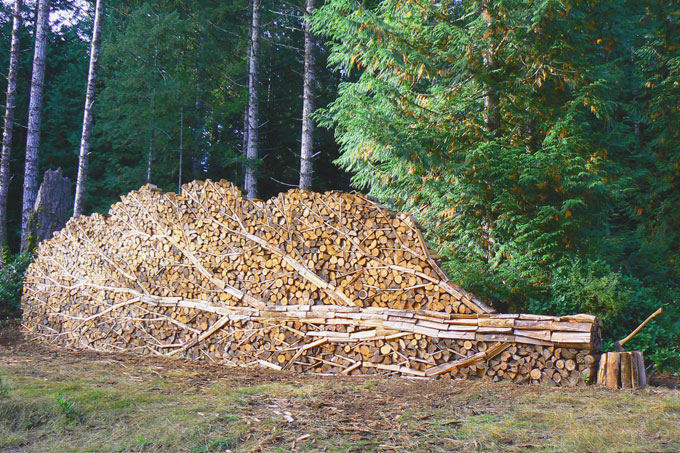
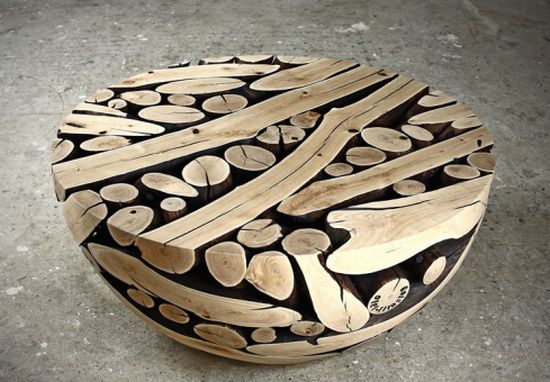
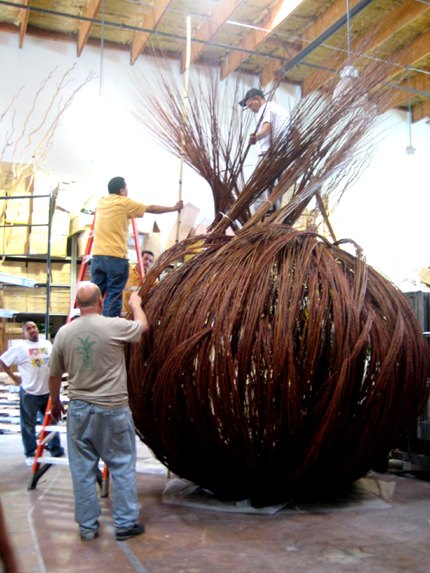





I think the ideas with the trees that have been done are wonderful!
oh wow, Kelly, that tree-shaped woodpile is amazing!! I would show it to my hubby because he loves that kind of stuff, but I’m afraid he’ll use the firewood we just ordered and try to create something like that at home…and then we’ll freeze all winter because he won’t let me use any of the logs!! Thanks for sharing, you have a great site!